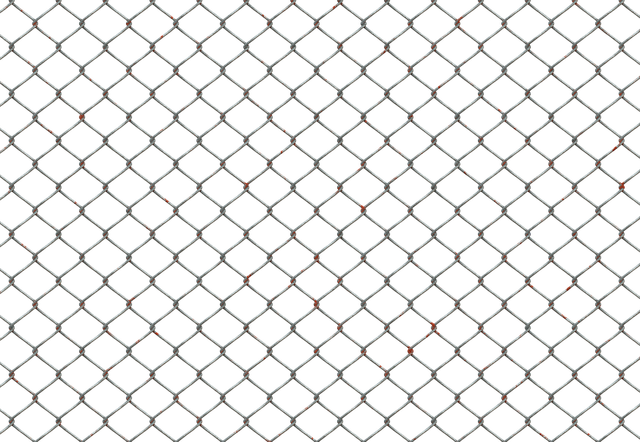Fences serve as both structural elements and design accents in outdoor spaces, and proper staining and sealing are crucial to maintaining their aesthetic appeal and longevity. This comprehensive guide delves into the art of fence staining and sealing for wooden fences. From understanding the benefits and exploring various stain types to selecting the perfect color and protecting against the elements, you’ll discover the essential steps for a job well done. Learn about DIY options versus professional services, ensuring your fence remains a striking focal point for years to come.
- Understanding Fence Staining: Benefits and Types
- Preparing Your Wooden Fence for Staining
- Choosing the Right Stain: Color Options & Applications
- The Sealing Process: Protecting Your Fence Long-Term
- Maintenance Tips for Optimal Fence Health
- DIY vs. Professional Fence Staining & Sealing
Understanding Fence Staining: Benefits and Types
Fence staining is more than just adding color; it’s a protective coat designed to prolong the life of your wooden fence. The process involves applying a stain that seeps into the wood, enhancing its natural beauty while also shielding against elements like UV rays, rain, and harsh sunlight that can cause fading and cracking. Regular staining not only preserves the fence’s aesthetic appeal but also retains its structural integrity.
There are various types of fence stains available in the market, each offering unique benefits. Some stains provide a more natural look by enhancing the wood grain, while others offer vibrant colors for a bold statement. Water-based stains are popular for their low odor and quick drying time, making them environmentally friendly options. Oil-based stains, though taking longer to dry, provide deeper penetration and superior protection against weather conditions. Choosing the right type of stain depends on your personal preference for color, the condition of your fence, and the desired level of protection.
Preparing Your Wooden Fence for Staining
Before applying any stain or sealer to your wooden fence, proper preparation is key. Start by thoroughly cleaning the fence to remove any dirt, debris, and mildew. Use a pressure washer or a brush with mild detergent and water to ensure a clean surface. This step is crucial as it allows the stain to adhere better and creates a more even finish.
Once cleaned, inspect the fence for any damaged or rotten sections. Repair or replace these areas to prevent further deterioration. Filling in gaps with wood putty and sanding smooth will create a solid base for staining. Additionally, consider sanding the entire fence surface lightly to roughen it up slightly, enhancing stain penetration.
Choosing the Right Stain: Color Options & Applications
Choosing the right stain is a crucial step in fence staining and sealing. The first consideration is color, with options ranging from natural wood tones to vibrant hues. Different colors serve various purposes; for example, darker shades can provide better concealment of existing stains or imperfections, while lighter tints can enhance the wood’s natural beauty. When selecting a color, also think about the fence’s surroundings and your personal aesthetic preferences.
Applications vary depending on the stain type. Water-based stains are popular due to their low odor and quick drying time, making them suitable for residential use. Oil-based stains, though more durable, take longer to dry and emit a stronger scent. Semi-transparent and solid stains offer different levels of color intensity and penetration, so choose based on your desired appearance and protection level.
The Sealing Process: Protecting Your Fence Long-Term
The sealing process plays a vital role in extending the life of your wooden fence and maintaining its aesthetic appeal. After staining, applying a sealer acts as a protective barrier against the elements, including UV rays from the sun, rain, snow, and extreme temperatures. These external factors can cause wood to fade, crack, or rot over time. A good-quality sealer fills in porous wood surfaces, creating a smooth finish that prevents water penetration.
By sealing your fence, you create an extra layer of defense against mold, mildew, and other debris that could damage the wood. The sealer forms a protective coat, reducing the need for frequent repairs and touch-ups. Regular sealing every 1-2 years, depending on exposure to elements and the type of sealer used, ensures your fence stays looking fresh and new for years to come.
Maintenance Tips for Optimal Fence Health
Regular maintenance is key to keeping your wooden fence in optimal health and ensuring a long-lasting, attractive finish. Begin with a thorough cleaning using a pressure washer or a brush and mild detergent, removing any dirt, mold, or mildew buildup. This step prepares the surface for staining and sealing.
After cleaning, inspect your fence for any damaged or rotten sections. Repair or replace these areas promptly to prevent further deterioration. Apply a fresh coat of sealant every 1-2 years, depending on exposure to elements, to protect against water damage and UV rays. Keep an eye out for chipping or flaking and touch up as needed to maintain a uniform and appealing finish.
DIY vs. Professional Fence Staining & Sealing
When it comes to fence staining and sealing, there are two main options: doing it yourself (DIY) or hiring a professional. DIY fence staining can be a cost-effective way to refresh your wooden fence, allowing you to choose from a wide range of colors and finishes at your local hardware store. It’s a straightforward process that many homeowners feel confident tackling as a weekend project. However, proper preparation is key to achieving a long-lasting result, including sanding, cleaning, and applying the stain evenly.
On the other hand, professional fence staining offers several advantages. Experts have access to high-quality materials and advanced techniques, ensuring a more durable finish that can withstand harsh weather conditions. They also bring specialized equipment, making them efficient in covering large areas quickly. While it might be more expensive than DIY options, hiring professionals guarantees a flawless result, saving you time and potential costs from retouching or redoing the job in the near future.
